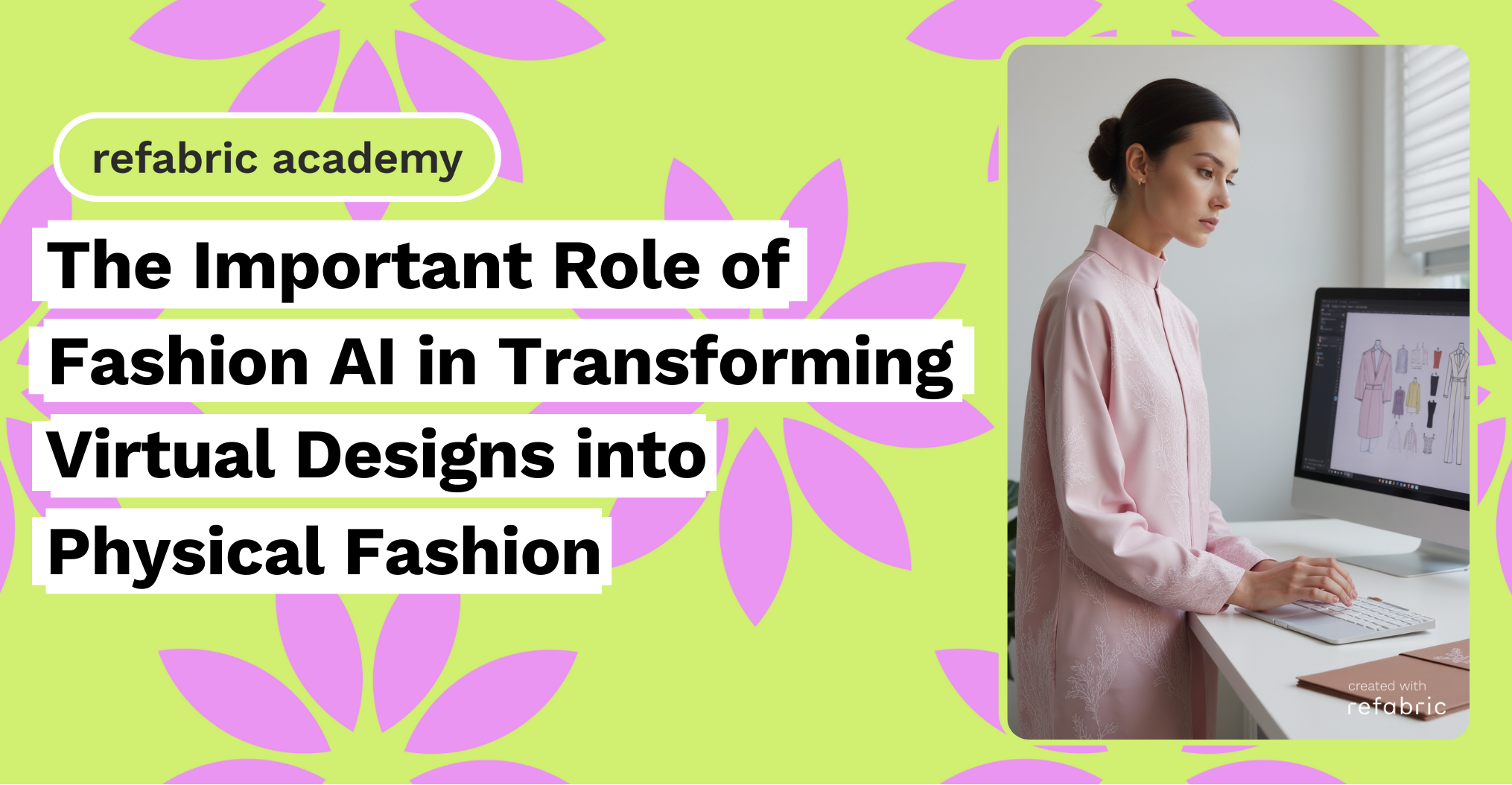Fashion AI is revolutionizing the creative process of fashion design, which has long been grounded in imagination and craftsmanship. With the integration of 3D virtual design tools and fashion AI, the industry is undergoing a digital transformation. Designers can now bring their ideas to life with unprecedented efficiency, speed, and precision. What begins as a pixel-perfect digital concept is seamlessly translated into tangible garments, bridging the gap between the virtual and physical worlds.
As the linchpin of this transformation, fashion AI is enabling scalable production, reducing waste, and fostering innovation. Here’s a closer look at how fashion AI is reshaping the journey from virtual designs to real-world fashion, transforming the way the industry operates.
The Power of 3D Virtual Design in Fashion
3D virtual design tools have redefined how fashion designers conceptualize and create. Designers can now experiment with silhouettes, textures, colors, and fabric simulations digitally, eliminating the need for traditional paper sketches or even early physical prototypes. These tools allow for intricate detailing and hyper-realistic renderings, making virtual designs almost indistinguishable from their physical counterparts.
Virtual designs open up endless creative possibilities, but the real challenge lies in turning these pixel-based ideas into wearable garments. That’s where fashion AI steps in to streamline the process, ensuring that the transition from virtual to physical is accurate, efficient, and scalable.
How Fashion AI Translates Pixels into Patterns
Fashion AI’s role begins with interpreting virtual designs. Advanced algorithms analyze 3D models, extracting detailed information about dimensions, fabric choices, stitching requirements, and even drape behavior. This data is then translated into digital patterns that can be directly fed into automated production systems.
Unlike traditional pattern-making, which relies on human expertise and is prone to errors, AI-powered systems ensure precision by considering every detail of the virtual design. The result? Patterns that perfectly match the designer’s original vision, reducing the need for multiple iterations during the sampling process.
Improving Prototyping and Sampling
Fashion AI has revolutionized the prototyping and sampling stages of fashion production. Generative AI tools allow designers to create multiple variations of a design digitally before committing to a physical sample. This reduces material waste and minimizes the environmental impact of the sampling process, which has long been a resource-intensive aspect of fashion production.
For instance, AI in fashion design can simulate how a fabric will behave when cut, sewn, or worn. Designers can tweak these simulations in real time, testing different materials, fits, and styles without ever creating a physical sample. Once the final design is approved, the transition to physical production is smooth and efficient.
AI in Automated Manufacturing
The journey from virtual to physical fashion doesn’t end with patterns and prototypes. Fashion AI also plays a significant role in automated manufacturing processes. Smart production systems equipped with AI can read digital patterns, cut fabrics with laser precision, and even control sewing machines for exact stitching.
These AI-driven systems ensure consistency across large-scale production runs, making it possible to replicate the designer’s vision with accuracy. Moreover, they speed up manufacturing timelines, allowing brands to respond quickly to market demands while maintaining high-quality standards.
Enhancing Sustainability Through Fashion AI
One of the most significant benefits of fashion AI is its contribution to sustainability. By optimizing every stage of the design-to-production pipeline, AI helps reduce waste, overproduction, and excess inventory. Virtual designs eliminate the need for excessive physical sampling, while AI-driven production ensures materials are used efficiently.
Additionally, AI-powered systems can predict demand based on real-time data, helping brands produce only what is needed. This shift not only saves resources but also aligns with the growing consumer demand for eco-conscious fashion practices.
A New Era for Fashion Designers
The integration of AI into fashion design doesn’t just benefit manufacturers and consumers—it also empowers designers. By automating technical processes like pattern-making and prototyping, AI allows designers to focus more on creativity and innovation. Moreover, designers can experiment with ideas that were once too complex or time-consuming to realize. From intricate fabric manipulations to unconventional silhouettes, AI expands the creative possibilities while ensuring feasibility in production.
Fashion AI is at the forefront of a digital revolution, bridging the gap between virtual designs and real-world fashion. By translating 3D concepts into scalable, efficient, and sustainable production processes, AI is redefining how the industry creates and delivers clothing.
As technology continues to evolve, the relationship between pixels and reality will only grow stronger, opening the door to a future where fashion design is more innovative, sustainable, and accessible than ever before. Whether you’re a designer, manufacturer, or consumer, one thing is clear: Fashion AI is shaping the future of how we create and wear clothing.
